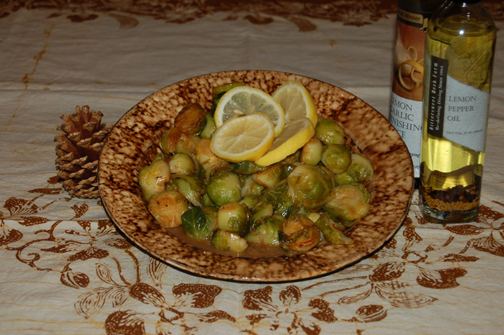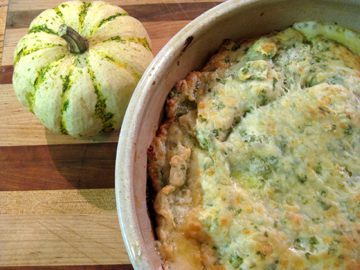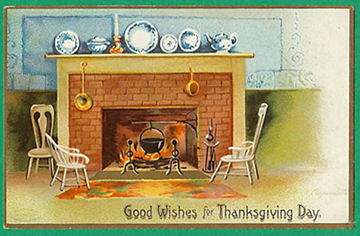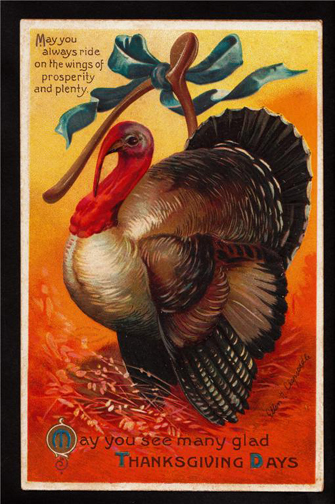
Like most of American history, our national Thanksgiving holiday is rich but complicated.
The myth of the first Thanksgiving at Plymouth, Massachusetts, in 1621 has undergone challenges in recent years, thanks to new scholarship and to the inclusion of more diverse voices in the telling of the American story.
We now know that the celebration wasn’t actually a religious Thanksgiving (which was more likely to involve fasting than eating) but more of a harvest festival. It wasn’t necessarily the first Thanksgiving in America; earlier challengers to this title have been identified in Texas, Florida, Maine, and Virginia. The settlers and Indians were as much keeping a wary eye on each other as offering friendship. Moreover, that event in Plymouth by no means started a regular tradition. The Thanksgiving that we celebrate (including most of its menu) is more or less a 19th-century invention.
Many American Indians justifiably resent the idea of a holiday that celebrates the survival of the English on these shores–and the help given to them by the Wampanoag tribe. Each year on Thanksgiving the United American Indians of New England organize a National Day of Mourning in Plymouth to remember the slaughter, intentional and unintentional, of Native Americans by European Americans.
I don’t want to downplay the importance of any of these challenges to the traditional story of Europeans and Indians giving thanks while sharing the fruits of the harvest in Plymouth. I believe that history is most meaningful when it is most complete.
Nevertheless, I do believe that what the capable curators at Plimoth Plantation carefully call “the harvest celebration in 1621” is an important story for all Americans, both as a real historical event and as a symbol.
As a real historical event it commemorates at least limited cooperation between Europeans and Native Americans. Both before and after that date, the two groups (particularly the Europeans) were indeed trying to wipe each other out. During the early days of the settlers at Plymouth and particularly during the three days of the harvest festival in 1621, however, they shared food, shared an acknowledgement of the bounty of nature, and tried to some degree to communicate with each other. Like personal moments, historical moments may be great without being perfect. This was one such moment.
The Thanksgiving story (not just the real event, but the myth) also shows us what a great people Americans can be together if we try to find commonality and share what we have.
Abraham Lincoln declared the first official national Thanksgiving in 1863, during the Civil War. In his proclamation he urged his countrymen not just to give thanks on the fourth Thursday in November but also to use the day to ask God to “heal the wounds of the nation and to restore it as soon as may be consistent with the Divine purposes to the full enjoyment of peace, harmony, tranquility, and Union.” Thanksgiving is ideally about coming to terms with the good and the bad in our nation—and moving on together.
On a more local level, Thanksgiving brings families and communities together. Like the nation and the world, family members don’t always get along. On Thanksgiving Day, however, we try to share goodwill along with the turkey and cranberry sauce. And we do our best to remember neighbors who don’t always have enough to eat by sharing with them as well, just as the Wampanoag and Puritans did.
As composer Alice Parker wrote simply in a benediction response she created for my own Charlemont Federated Church, “We give thanks. We count our blessings. We share them with all the world.”
Amen.
 In this post and the next I’ll share a few of the dishes that will grace my family’s table this Thanksgiving. None of them is terribly demanding to make. I hope they help spread the Thanksgiving spirit.
In this post and the next I’ll share a few of the dishes that will grace my family’s table this Thanksgiving. None of them is terribly demanding to make. I hope they help spread the Thanksgiving spirit.
 Chef Randy’s Dynamite Brussels Sprouts
Chef Randy’s Dynamite Brussels Sprouts
This simple, seasonal recipe comes from The Artisan Gourmet by Randy Tomasacci, a book I mentioned in my last post. Randy is the demo chef for Bittersweet Herb Farm in Shelburne, Massachusetts, and his new book blends recipes using BHF’s products with humorous stories from his life and cooking career. This vegetable dish is a real winner and looks gorgeous to boot.
In case you’ve never prepared Brussels sprouts before, here are prepping instructions adapted from The Culinary Institute of America Cookbook: Cut off the ends of the stems. Trim off any withered or discolored leaves. With the stem facing up, cut a small incision in the stem of each sprout; this will help the vegetables cook more evenly. Soak the prepared Brussels sprouts in cold water until you are ready to cook them.
NOTE: If you can’t find the Bittersweet products in time for Thanksgiving and want to make this dish on your own, you may play with ingredients. The oil is a mixture of canola oil and olive oil with lemon oil (you could use zest!), bay leaves, peppercorns, and mustard seeds. You could probably get away with just the oil and lemon. The finishing sauce is soy based with a little water, canola oil, and lemon juice plus a trace of balsamic vinegar and herbs and spices to taste. Again, you could probably cheat with just soy sauce, water, and lemon juice. The overall effect is Teriyaki-like: yum!
Ingredients:
1 pound Brussels sprouts
2 tablespoons Bittersweet Herb Farm Lemon Pepper Oil
3 tablespoons Bittersweet Herb Farm Lemon Garlic Finishing Sauce
Instructions:
Blanch the Brussels sprouts for 3 minutes. Drain them and slice them in half. In a frying pan, heat the Lemon Pepper Oil, and add the sprouts to the hot pan. Sauté the sprouts until they are brown, reduce the heat to low, and add the Finishing Sauce. When the sauce is heated, remove the sprouts in their sauce to a serving dish. Serves 4.















